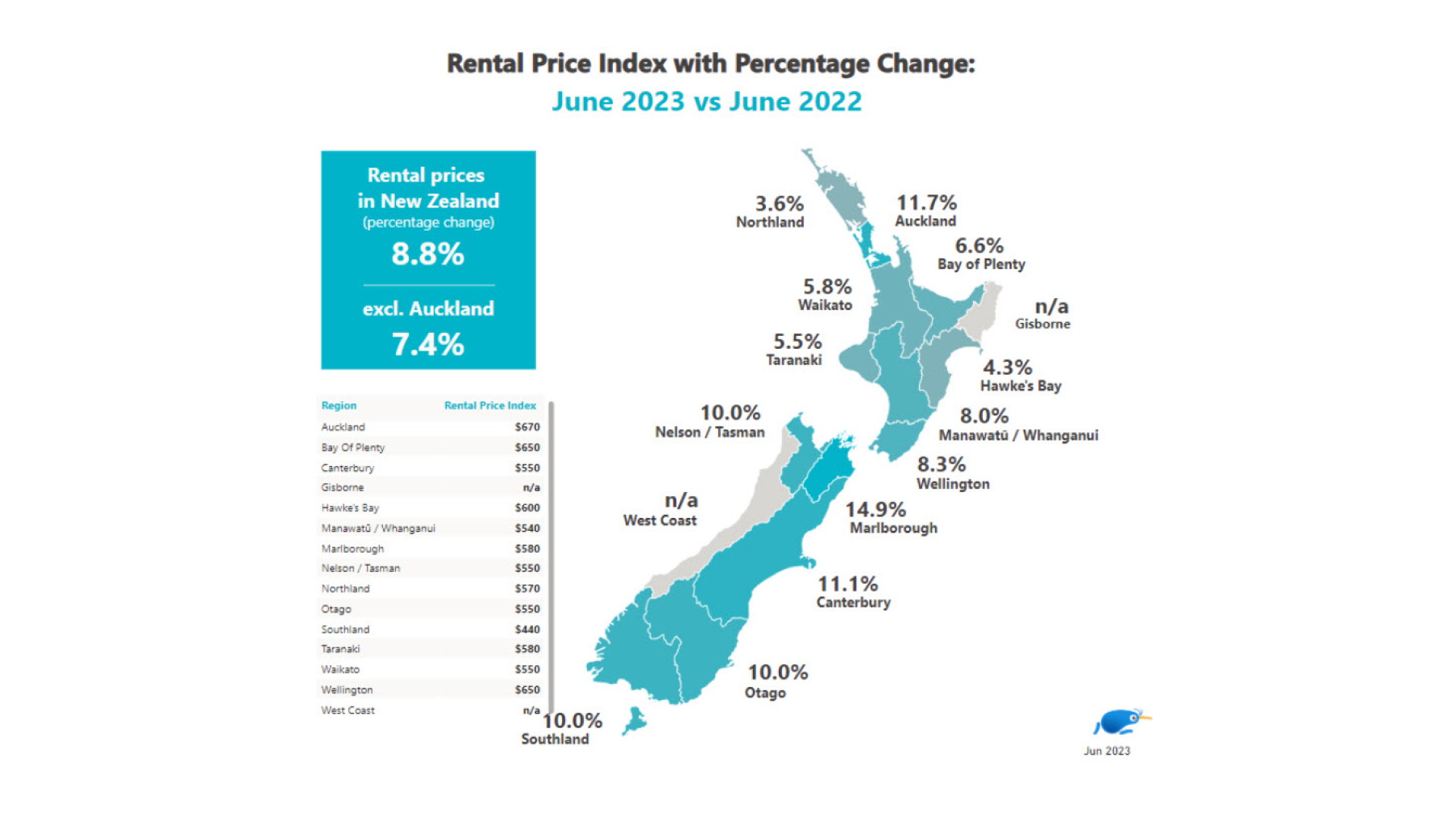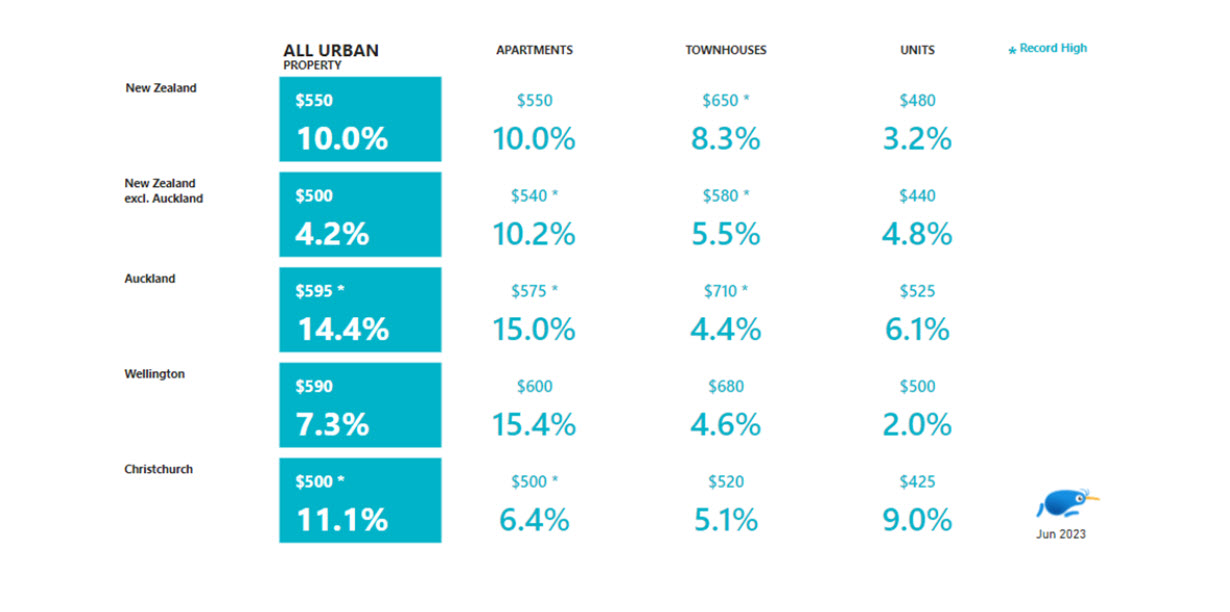News Next article
June Rental Price Index 2023
Trade Me’s RPI for June shows New Zealand’s median weekly rental prices continue to reach new heights in 2023.
25 July 2023Tenants are doing it tough this winter, and are on average paying $50 a week more compared to this time last year, according to Trade Me’s latest Rental Price Index.
New Zealand’s median weekly rent rose 9 per cent on last year to reach a new record of $620 in June, says Trade Me’s Director of Property Sales Gavin Lloyd.
“$50 extra a week adds up for tenants – that’s $2,600 more a year in rent,” Mr Lloyd said.
“In this economy, costs are increasing across the board and this is hitting renters hard. Landlords are still feeling confident to put up prices, but this might be reaching a peak as the confirmed recession, cost of living and lack of disposable income hits tenants,” Mr Lloyd said.
“Despite the annual increase, rental prices do seem to be slowing in some regions. Over the coming months we expect many tenants will choose to stay where they are rather than look for a new rental, which should cause prices to drop or at least steady.”
Rents rise in the regions
Every region saw an annual increase in June, with many seeing double-digit percentage growth.
The largest rent jumps were seen in Marlborough which rose 15 per cent to reach a new record of $580 per week, Auckland saw its median weekly rent jump 12 per cent to a new high of $670. Canterbury saw an 11 per cent annual increase to remain steady at May’s record of $550.
Northland and Hawke’s Bay saw the smallest increases out of the regions with the median weekly rent at $600 and $570 respectively.
“If we look at the monthly trend across the motu, however, it appears rent growth in some regions is slowing,” Mr Lloyd said.
Wellington, Canterbury, Hawke’s Bay, Manawatū/Whanganui, and Bay of Plenty saw no change in rents when compared with May. Meanwhile Northland, Waikato, Taranaki and Nelson/Tasman saw rents decrease when compared with May.
“It’s good news for tenants that we’re seeing signs of the market cooling, however, time will tell if this trend continues beyond the typical winter slump.”
City living continues to drive demand
The demand for apartments, townhouses and units continues in all urban centres.
Apartments across the board were popular in June, with rents for apartments in Auckland and Christchurch reaching new record highs of $575 and $500, respectively.
Townhouses were also in demand, with Auckland townhouses up 4 per cent to an average of $710 per week.
“We are seeing a lot of demand in the major cities, with people choosing apartments and townhouses that are smaller, warmer and drier, but also close to the city, which may be helping people save transport and other costs,” said Mr Lloyd.
Interest and demand stabilising
The number of properties available for rent was down significantly in June, falling 19 per cent on the same time last year, while demand was up at 35 per cent.
While the change is seemingly much lower than this time in 2022, if we look at the monthly trend both supply and demand seems to be settling. Nationwide supply was down 5 per cent on May, and demand was down 6 per cent.
“We expect given the high rent prices, and the winter months, people are deciding to stay put rather than face the tough market,” Mr Lloyd said.
Taranaki was the exception, with a 8 per cent increase in listings and 6 per cent rise in demand to match when compared with May.
“Winter is often a time of year where people rug up rather than move house. When we reach spring it will be interesting to see whether interest increases, or if the high rent prices will put pressure on landlords to lower prices in order to entice potential tenants,” said Mr Lloyd.


